How To Care For A Hermit Crab
This page contains affiliate links. We may earn money or products from the companies mentioned in this post through our independently chosen links, which earn us a commission. Learn More
General Stats:
- Pet Type: Crustacean
- Size: Up to 4 inches
- Diet: Omnivore
- Lifespan: up to 10 years
When you imagine a hermit crab, what do you picture? You probably picture a decorative shell with a few crab-like legs sticking out of it. For many people, that’s as far as their knowledge of hermit crabs goes but there is so much more to learn and to love about these unique pets.
Hermit crabs are low-maintenance pets, but that doesn’t necessarily make them easy. Like any other pet, these crabs have specific requirements in terms of their diet and habitat. If you’re planning to bring home a hermit crab, it’s your responsibility to make sure you understand how to care for it properly so your crab will live a long and happy life.
We’ve assembled the basics of what you need to know about proper hermit crab care to get you started. Read on to learn about hermit crab diet, habitat, and veterinary care requirements.
Habitat Setup for Hermit Crabs
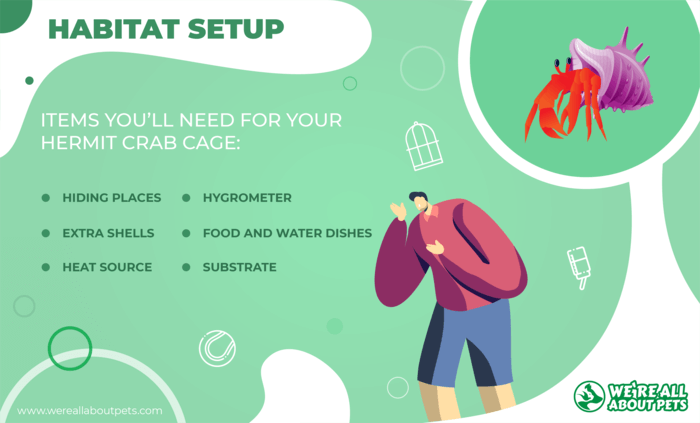
What many people like about hermit crabs is that they don’t require large enclosures and they are quite simple to maintain. A large plastic tank will work for smaller crabs, though you may want to upgrade to a larger fish tank or terrarium as your crab grows or if you plan to keep multiple together.
Your hermit crab habitat or “crabitat” should offer the equivalent of a 5 gallon tank worth of space per two crabs, ideally more. It should be deep enough for burrowing (with enough substrate as well) and made from durable materials since these pets like to dig. Make sure it retains heat and humidity as well but still provides for adequate ventilation.
Here are some of the items you’ll need for your hermit crab cage:
- Hiding Places – Though your hermit crab has a shell to hide in, it will also appreciate having a few hiding places in the tank. Your crab will also enjoy having a few things like pieces of driftwood or plastic decorations to climb on.
- Extra Shells – As your hermit crab grows, it will molt and move from smaller to larger shells. Provide an assortment of seashells in the tank so your crab can choose the right one.
- Heat Source – Hermit crabs should be kept between 70 and 75 degrees Fahrenheit, so you’ll need a heat source like an under-tank heater or heat lamp to keep the environment warm.
- Hygrometer – Your hermit crab requires a relative humidity level between 50% and 80%, so you should be misting the tank daily and tracking the humidity using a hygrometer.
- Food and Water Dishes – Provide your hermies with fresh and saltwater in non-metal water bowls, each with a sea sponge. The food dish should be shallow and non-metal as well.
- Substrate – Hermit crabs love to dig, so provide several inches of soft, fine-textured substratev like coconut fiber or beach sand.
In addition to choosing the right equipment for your hermit crab’s enclosure, you should also think about where to put it. Place it away from air vents, doors/windows, and out of direct sunlight so you don’t have to worry about temperature fluctuations.
Hermit Crab Diet
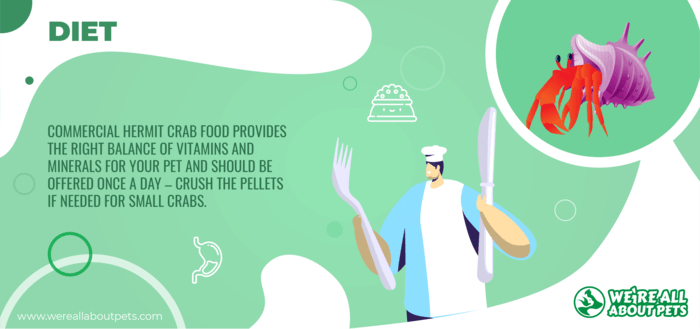
In the wild, hermit crabs will eat just about anything they can find. As a hermit crab owner, however, it’s your responsibility to provide for your pet’s nutritional needs. The best way to provide for them is to feed your crab a commercial hermit crab food supplemented with fresh fruits and veggies.
Here are some quick facts about the ideal hermit crab diet:
- Commercial hermit crab food provides the right balance of vitamins and minerals for your pet and should be offered once a day – crush the pellets if needed for small crabs.
- Supplement your crab’s diet with fresh foods including leafy greens, small amounts of fresh fruit, and even cooked meat or fish.
- Put your hermit crab’s food out at night and remove any uneaten food in the morning. Always use ceramic or nonmetal food and water bowls because hermit crabs are sensitive to metal.
On top of your hermit crab’s diet, be sure to provide unlimited access to clean water as well. You can use tap water, but it’s a good idea to treat it with dechlorinator to remove chlorine and other heavy metals that can be harmful to your crab. Place a sea sponge in each dish so your crab can easily drink the water and to help him climb out of the dish if he falls in.
You should provide water dishes of both dechlorinated fresh water and saltwater for your crab. Dechlorinated tap water can be treated with aquarium salt or ocean salt. Clean and replace the sponge every few days.
Hermit Crab Veterinary Care
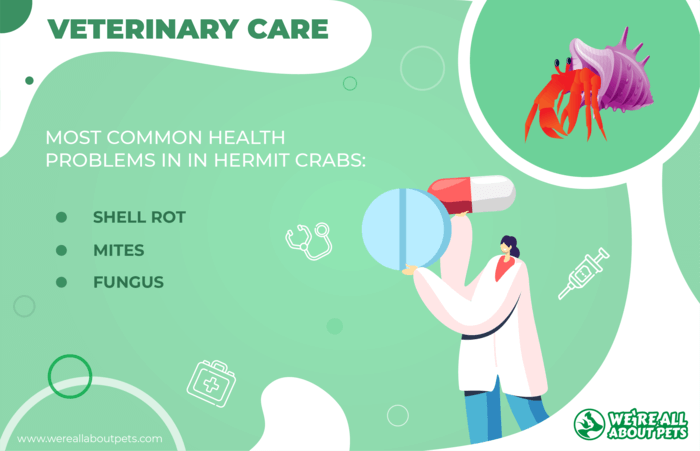
Caring for a hermit crab is very different from other pets and you may not immediately notice when your crab is sick. Many new hermit crab owners mistake molting for a sign of illness when in reality your new pet is just shedding its exoskeleton to make room for new growth.
It’s a good idea to familiarize yourself with the signs of common health issues in hermit crabs so you can identify them and remedy them quickly.
Here are some of the most common health problems in hermit crabs:
- Shell rot
- Mites
- Fungus
Unfortunately, if your hermit crab gets sick there may not be much you can do about it. A visit to the veterinarian is unlikely to be worth the cost and treatment may not work anyway. Keep in mind that aquarium fish medications may be toxic for your crab, so use caution when treating your crab, buyzolpideminsomnia.com.
Hermit Crab Fun Facts
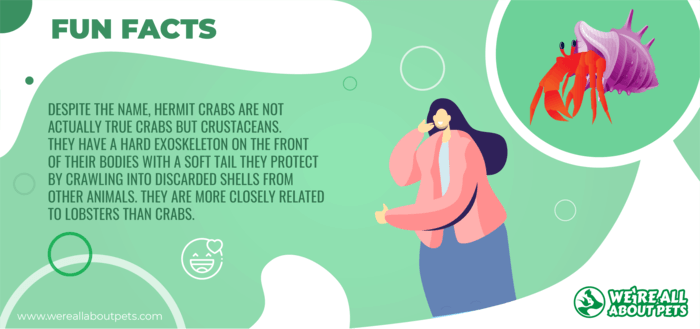
- Despite the name, hermit crabs are not actually true crabs but crustaceans. They have a hard exoskeleton on the front of their bodies with a soft tail they protect by crawling into discarded shells from other animals. They are more closely related to lobsters than crabs.
- Another way in which the name “hermit crab” doesn’t fit is the fact that they are not solitary but very social animals. The name may come from the fact that they shelter alone in a shell, but you’ll find hermit crabs living in groups of 100 or more in the wild.
- Pollution is a major issue for hermit crabs in the wild because they often mistake plastic containers for shells. An estimated 570,000 hermit crabs die each year getting stuck in plastic debris. When they die, their bodies release a pheromone that signals to other crabs a new shell may be available.
- Though hermit crabs are largely omnivorous and will scavenge on whatever food is available, they can also filter microscopic food from the water around them using their feathery mouthparts.
- Marine hermit crabs will often encourage anemones to attach to their shells as a form of defense against predators – the anemones sting helps protect them. They will even transfer the anemone to a new shell when they switch.
If you’re looking for a fun and friendly pet, consider the hermit crab. These little crustaceans are fairly low-maintenance and they do well in pairs or groups. That being said, they require a certain degree of care and attention, just like any pet.
Unless you’re willing to put in the time and effort to be a responsible hermit crab owner, you may want to consider another pet. Consider as well that hermit crabs have a surprisingly long lifespan up to 10 years and can grow up to 6 inches long. Be prepared to care for your pet for its whole life or not at all.
With this detailed hermit crab care guide, you should have a better understanding of what it looks like to care for this unique type of pet.
Frequently Asked Questions
How long do hermit crabs live?
The average lifespan for a hermit crab is fairly short, but primarily due to improper care and keeping. With proper care and a healthy diet, hermit crabs can live 10 years or more.
How much do hermit crabs cost?
The cost to keep a pet hermit crab is much lower than other unusual pets, but there are certain expenses you’ll have to cover upfront. The actual cost of a hermit crab is only a few dollars at the pet store, though you may pay more for larger sizes and fancy shells. The tank and supplies will cost an additional $30 to $100, but monthly costs for feeding are fairly low.
How big do hermit crabs get?
When you look at a hermit crab, most of what you’re seeing isn’t actually the animal itself. Hermit crabs are crustaceans that live inside shells, so they switch to larger and larger shells as they grow. Across all hermit crab species, size ranges up to 11 inches but most pet hermit crabs top out around 4 inches.
What do hermit crabs eat?
The hermit crab is classified as an omnivorous scavenger which means it will eat just about anything. These crustaceans forage for food and will eat everything from fruit and vegetables to meat and insects. In captivity, hermit crabs usually eat a commercial diet supplemented with fresh food and treats.
Are hermit crabs good pets?
The fact that hermit crabs require relatively little space and don’t need a lot of daily maintenance makes them good pets. That being said, any animal requires a certain degree of care and hermit crabs are no different. Take care to provide a proper “crabitat” for your pet along with a healthy diet.
Are hermit crabs messy?
Hermit crabs aren’t necessarily messy pets, but they do like to burrow – especially when they are molting. When this happens, you may find substrate and tank accessories pushed around the enclosure.
Where do hermit crabs come from?
Hermit crabs belong to the superfamily Paguroidea and they are decapod crustaceans. They can be found in both terrestrial and aquatic environments. Marine hermit crabs spend most of their lives underwater and a land hermit crab still requires access to freshwater and saltwater.
Do hermit crabs bite?
The hermit crab doesn’t have teeth, so these pets do not bite. They ingest food through their mouths, but they have softer mouthparts than most teeth are. Though your hermit crab won’t bite, it might pinch you if it feels frightened or threatened.
Do hermit crabs sleep?
Hermit crabs are nocturnal creatures which means they typically sleep during the day and come out to forage for food at night. When they aren’t active, hermit crabs may hide under something or simply tuck themselves up into their shell.
How long are hermit crabs pregnant for?
As crustaceans, the mating process for hermit crabs is very different from many other pets. Hermit crabs mate in seawater and their babies hatch from eggs. Breeding hermit crabs can be challenging, but it can be done if you pay attention their habitat and behavior.






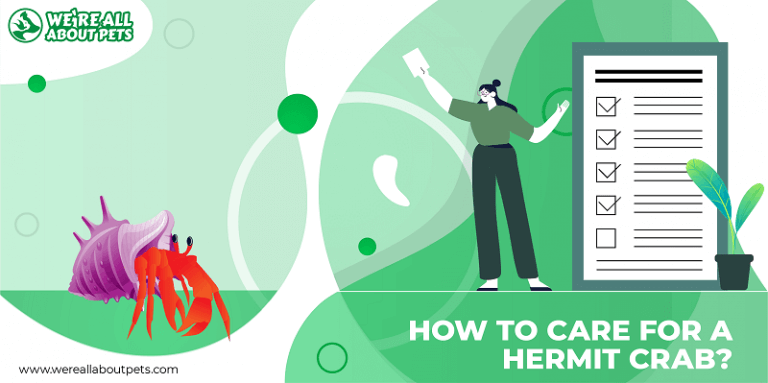
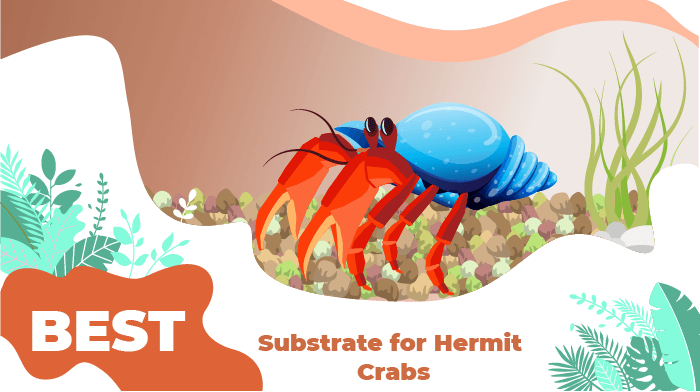

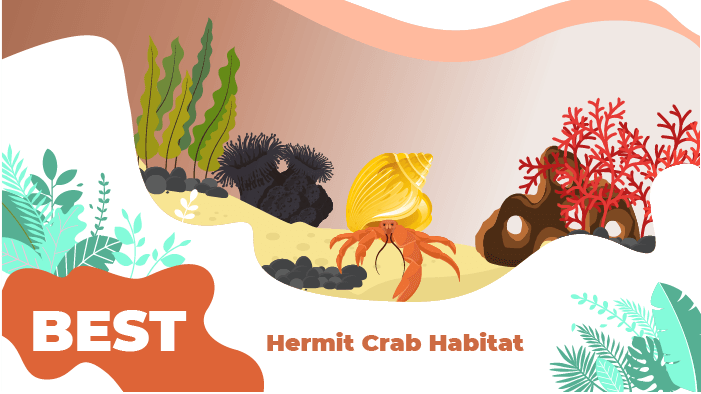
Cecilia
I have 2 hermit crab and they do fine without a u-v light they have lived for 5 years without it so should I put it in.
Kate Barrington
Hey Cecilia, we're so glad your hermit crabs are doing well! Adding a UV light may help them be a little more active and will prevent them from developing a vitamin D3 deficiency. If they're doing okay without it, however, you may not need to!
Chris
In my habitat would it be a good idea to create an ocean like area for them to swim. We have multiple and have for years altho this year we got new one as the old ones passed away together? We will be going all out this go round though, so would an artificial ocean be a good thing? Thanks
Mike Corcoran, DVM, DABVP (R/A), CertAqV
Great question! I'm sure your crab would welcome that as long as they can also get out of the water when desired. I always recommend that there be two bowls accessible for hermit crabs. Both should be large enough to allow them to get in and out as they please; one with fresh water and the other with salt water. The fresh water should be reverse osmosis water, or tap water that has been treated with a dechlorinator. For the salt water, use aquarium salt mixed as ocean water or purchase pre-mixed salt water. Be aware that as it evaporates, it loses water, but not salt. You should replace the loss with fresh water, or completely dump the bowl and refill it. If you want to get a little bit fancy, you can get a refractometer or a hygrometer and test the water to make sure it's between 28 and 32 ppt of salinity or a specific gravity between 1.020 and 1.024.